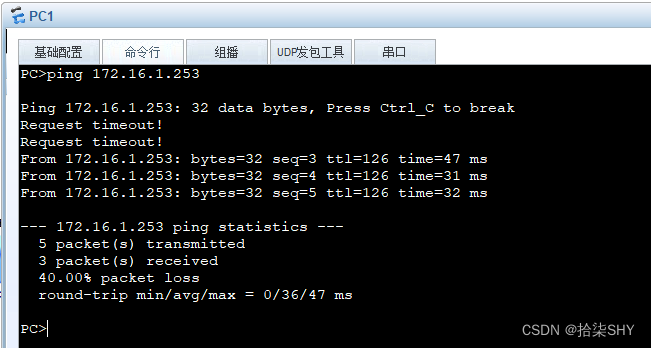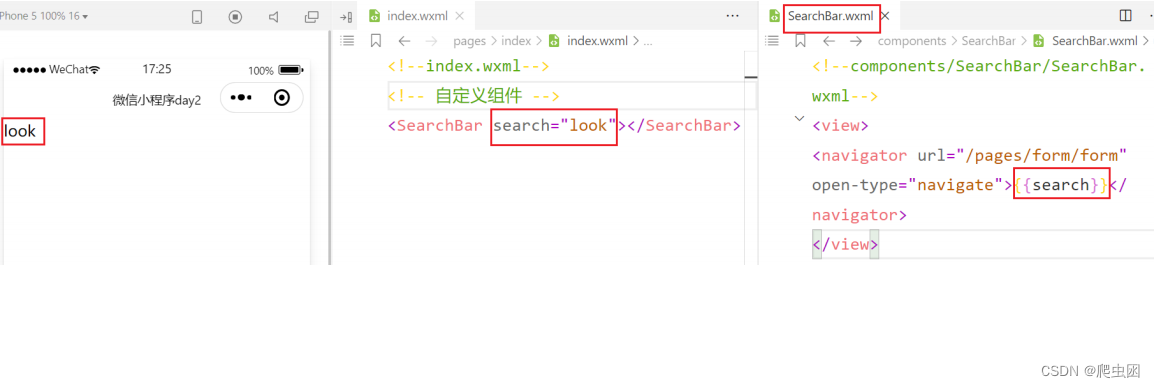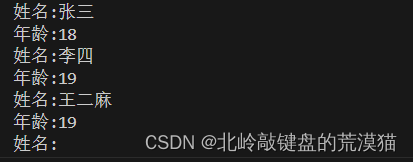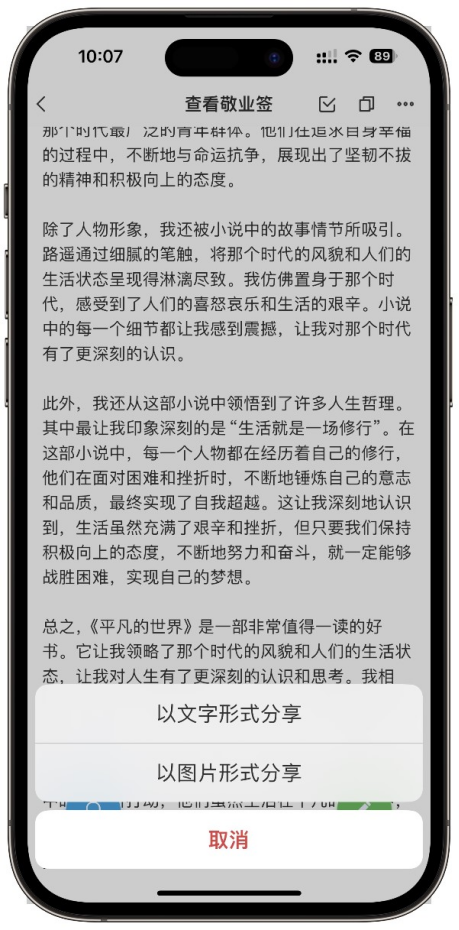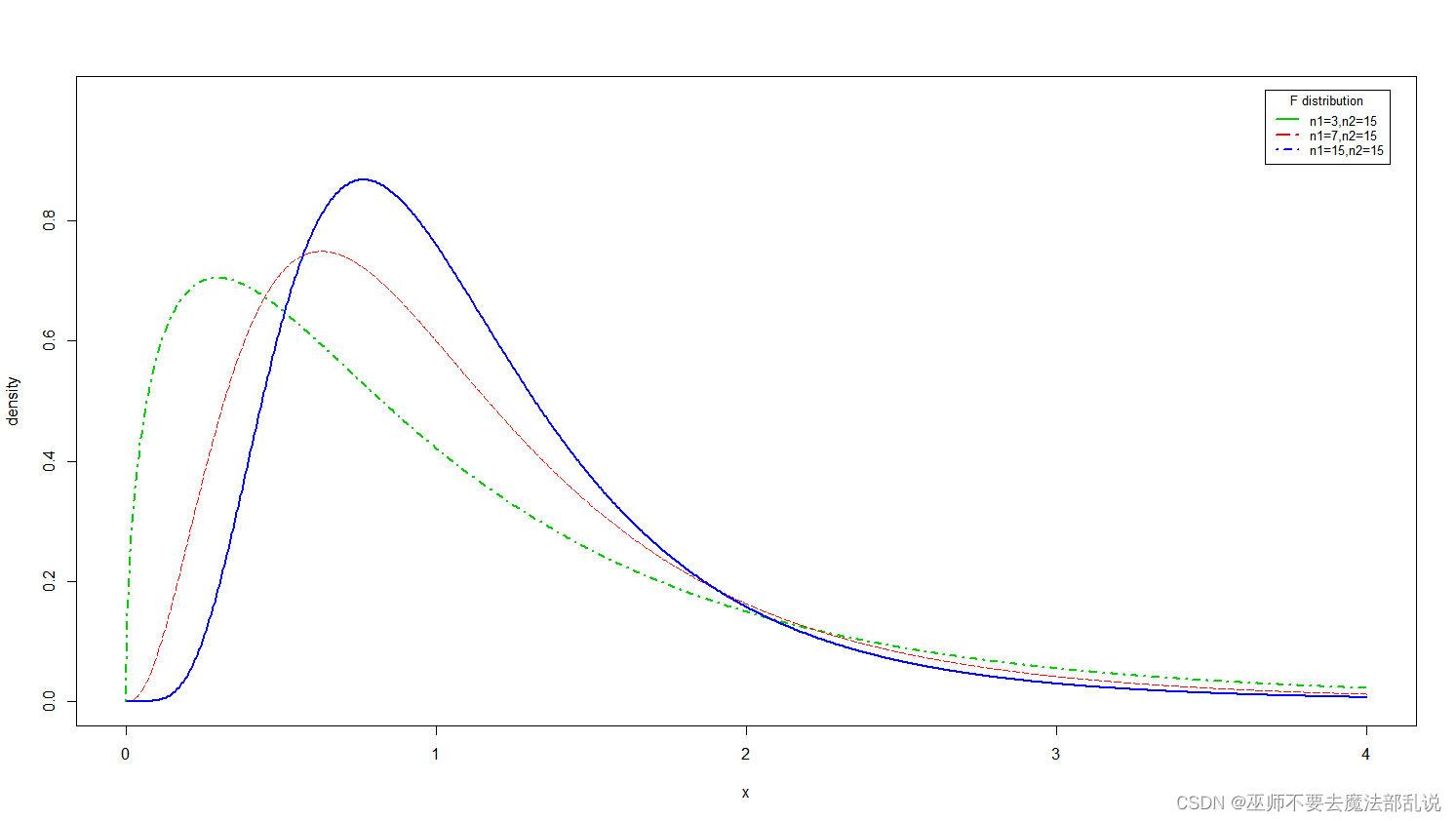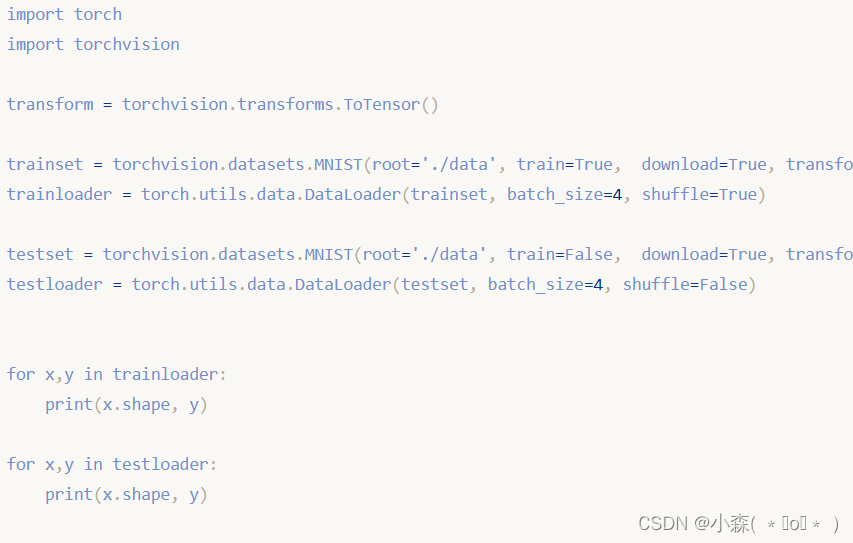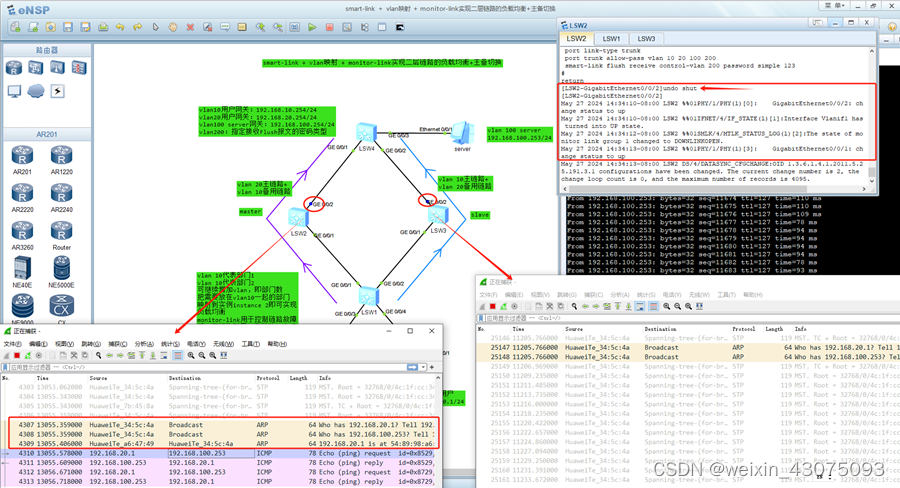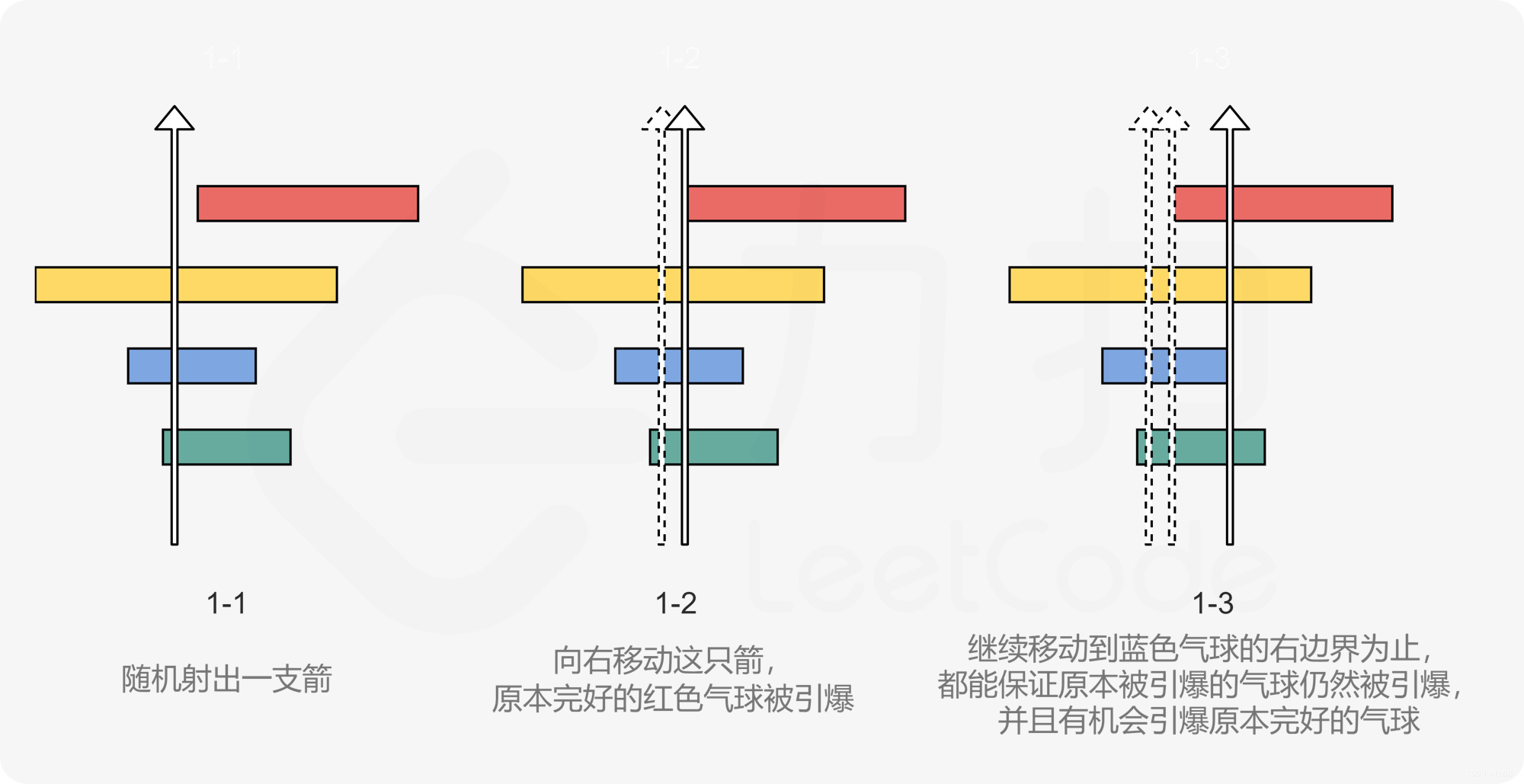1、JNI概述
Java Native Interface (JNI) 是一种编程框架,使得Java代码能够与用其他编程语言(如C和C++)编写的本地代码进行交互。JNI允许Java代码调用本地代码的函数,也允许本地代码调用Java代码的函数。下面是对JNI机制的详细概述,包括其基本原理、工作流程、常见用途和示例代码。
1.1. JNI的基本原理
JNI的核心原理是通过一个标准化的接口,使得Java虚拟机(JVM)和本地代码可以互相通信和操作。JNI提供了一套函数,这些函数可以在本地代码中使用,以便与JVM交互,例如创建和操作Java对象,调用Java方法,处理异常等。
1.2. JNI的工作流程
使用JNI的工作流程通常包括以下几个步骤:
1、声明本地方法:在Java类中声明native方法。
2、加载本地库:在Java类中加载包含本地方法实现的库。
3、生成头文件:使用javac和javah工具生成包含native方法声明的头文件。
4、实现本地方法:在C/C++中实现native方法。
5、编译本地库:编译C/C++代码生成共享库。
6、调用本地方法:在Java代码中调用native方法。
1.3. JNI的常见用途
JNI常用于以下几种场景:
1、性能优化:将性能关键的部分用C/C++实现,以提高执行效率。
2、访问底层系统资源:访问操作系统的底层功能或硬件资源。
3、重用现有库:调用已有的C/C++库或API。
4、实现平台特定功能:在跨平台应用中实现特定平台的功能。
2、JNI的优缺点
2.1、优点
1、性能优化:可以使用高效的本地代码,尤其是在性能关键的部分。
2、硬件访问:能够直接访问Java API不提供的底层硬件功能。
3、代码复用:重用现有的C/C++库,无需重新实现复杂的逻辑。
4、多语言互操作:可以在同一个应用中使用多种编程语言,各取所长。
2.2、缺点
1、复杂性增加:引入了额外的复杂性,需要了解C/C++和JNI API。
2、平台依赖性:本地代码需要针对不同的平台编译,增加了维护成本。
3、内存管理:需要手动管理内存,容易出现内存泄漏和指针错误。
4、调试困难:调试JNI代码比纯Java代码困难,需要使用特定的工具和方法。
3、JNI的使用场景
1、性能优化:在需要大量计算或复杂逻辑的地方使用本地代码。
2、硬件功能:访问摄像头、传感器等底层硬件功能。
3、现有库:使用已有的C/C++库,例如图像处理库、加密库等。
4、跨语言调用:在需要与其他编程语言互操作时,例如从Java调用C++代码。
4、Android日志系统概述
Android日志系统主要由Log类和__android_log_print等C/C++函数组成,提供了记录调试信息的功能。Java层的日志API(如android.util.Log)最终调用的是本地日志函数,这些函数将日志消息写入系统日志缓冲区。
要深入了解Android Log的JNI实现流程,我们需要从JNI机制、Android日志系统、JNI方法实现及其相互配合的细节等方面进行详细分析。
5、本地方法声明(关键字native)
frameworks\base\core\java\android\util\Log.java
/**
* Checks to see whether or not a log for the specified tag is loggable at the specified level.
*
* The default level of any tag is set to INFO. This means that any level above and including
* INFO will be logged. Before you make any calls to a logging method you should check to see
* if your tag should be logged. You can change the default level by setting a system property:
* 'setprop log.tag.<YOUR_LOG_TAG> <LEVEL>'
* Where level is either VERBOSE, DEBUG, INFO, WARN, ERROR, ASSERT, or SUPPRESS. SUPPRESS will
* turn off all logging for your tag. You can also create a local.prop file that with the
* following in it:
* 'log.tag.<YOUR_LOG_TAG>=<LEVEL>'
* and place that in /data/local.prop.
*
* @param tag The tag to check.
* @param level The level to check.
* @return Whether or not that this is allowed to be logged.
* @throws IllegalArgumentException is thrown if the tag.length() > 23.
*/
public static native boolean isLoggable(String tag, int level);

/**
* Low-level logging call.
* @param priority The priority/type of this log message
* @param tag Used to identify the source of a log message. It usually identifies
* the class or activity where the log call occurs.
* @param msg The message you would like logged.
* @return The number of bytes written.
*/
public static int println(int priority, String tag, String msg) {
return println_native(LOG_ID_MAIN, priority, tag, msg);
}
/** @hide */ public static final int LOG_ID_MAIN = 0;
/** @hide */ public static final int LOG_ID_RADIO = 1;
/** @hide */ public static final int LOG_ID_EVENTS = 2;
/** @hide */ public static final int LOG_ID_SYSTEM = 3;
/** @hide */ public static native int println_native(int bufID,
int priority, String tag, String msg);

6、本地方法实现
frameworks\base\core\jni\android_util_Log.cpp
static jboolean android_util_Log_isLoggable(JNIEnv* env, jobject clazz, jstring tag, jint level)
{
if (tag == NULL) {
return false;
}
const char* chars = env->GetStringUTFChars(tag, NULL);
if (!chars) {
return false;
}
jboolean result = false;
if ((strlen(chars)+sizeof(LOG_NAMESPACE)) > PROPERTY_KEY_MAX) {
char buf2[200];
snprintf(buf2, sizeof(buf2), "Log tag \"%s\" exceeds limit of %d characters\n",
chars, PROPERTY_KEY_MAX - sizeof(LOG_NAMESPACE));
jniThrowException(env, "java/lang/IllegalArgumentException", buf2);
} else {
result = isLoggable(chars, level);
}
env->ReleaseStringUTFChars(tag, chars);
return result;
}
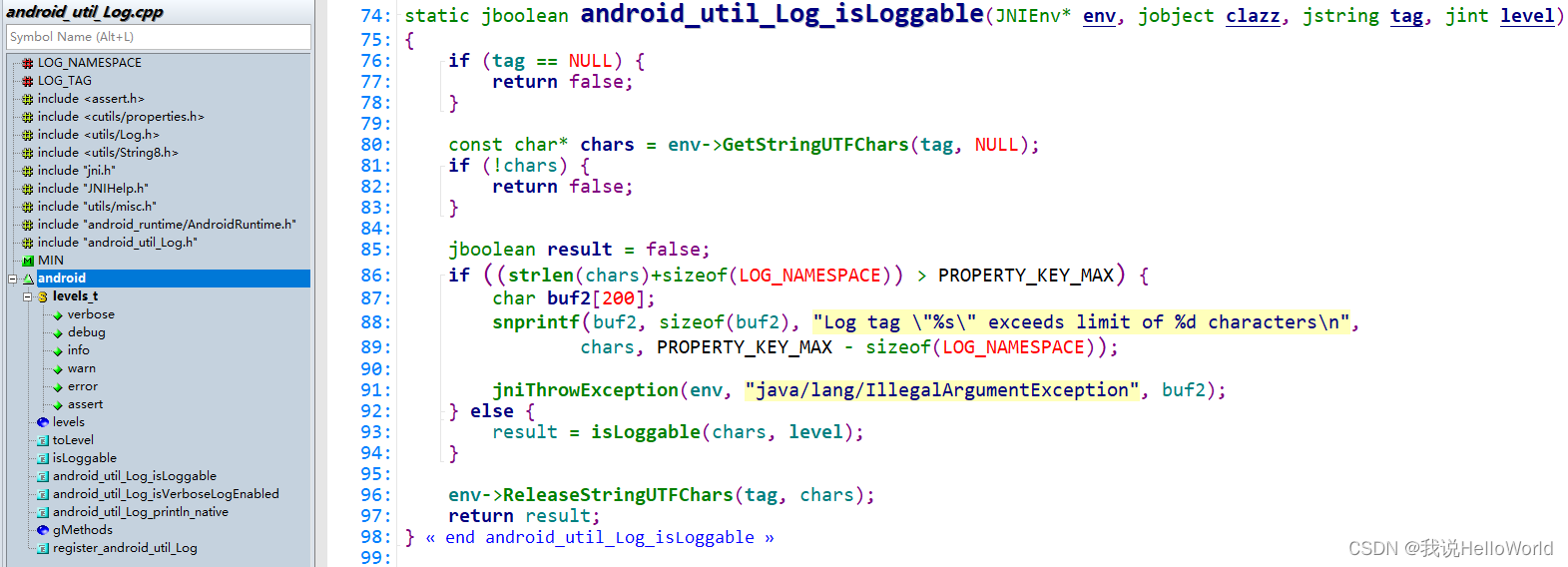
/*
* In class android.util.Log:
* public static native int println_native(int buffer, int priority, String tag, String msg)
*/
static jint android_util_Log_println_native(JNIEnv* env, jobject clazz,
jint bufID, jint priority, jstring tagObj, jstring msgObj)
{
const char* tag = NULL;
const char* msg = NULL;
if (msgObj == NULL) {
jniThrowNullPointerException(env, "println needs a message");
return -1;
}
if (bufID < 0 || bufID >= LOG_ID_MAX) {
jniThrowNullPointerException(env, "bad bufID");
return -1;
}
if (tagObj != NULL)
tag = env->GetStringUTFChars(tagObj, NULL);
msg = env->GetStringUTFChars(msgObj, NULL);
int res = __android_log_buf_write(bufID, (android_LogPriority)priority, tag, msg);
if (tag != NULL)
env->ReleaseStringUTFChars(tagObj, tag);
env->ReleaseStringUTFChars(msgObj, msg);
return res;
}
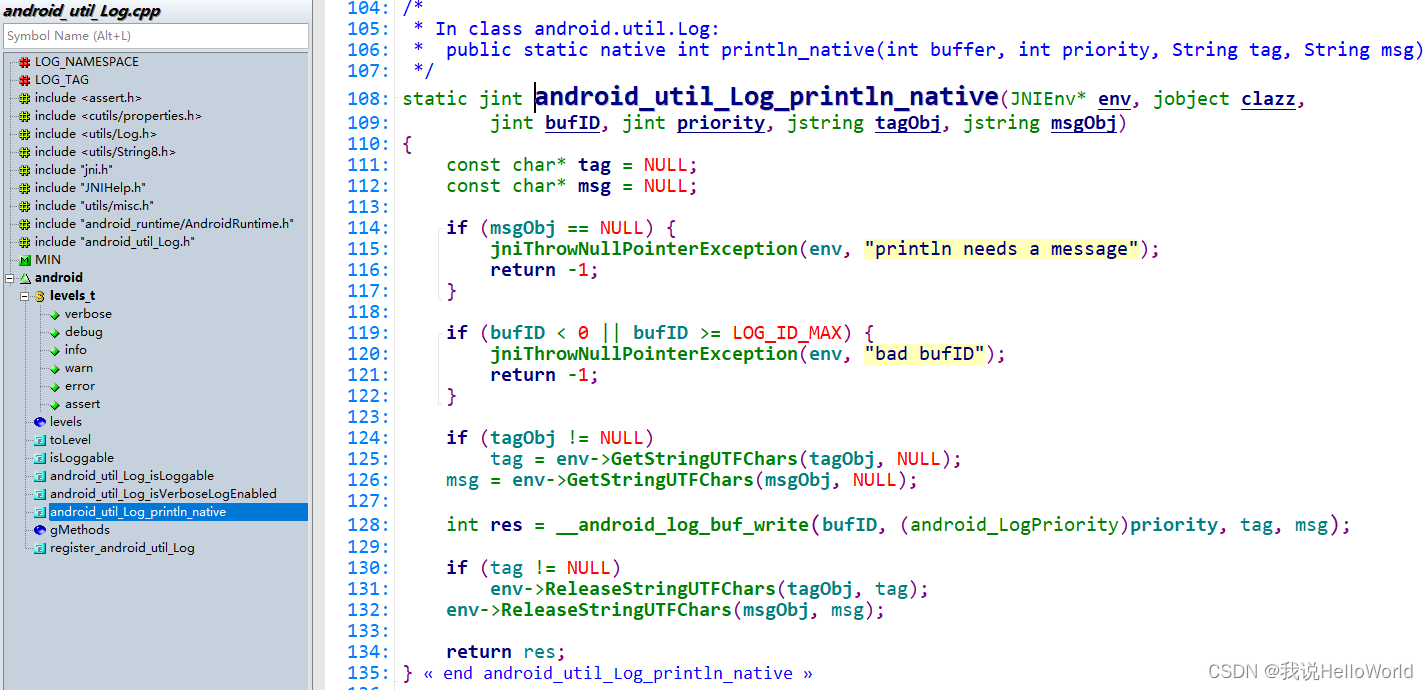
7、虚拟机里面动态注册
frameworks\base\core\jni\AndroidRuntime.cpp
/*
* Register android native functions with the VM.
*/
/*static*/ int AndroidRuntime::startReg(JNIEnv* env)
{
/*
* This hook causes all future threads created in this process to be
* attached to the JavaVM. (This needs to go away in favor of JNI
* Attach calls.)
*/
androidSetCreateThreadFunc((android_create_thread_fn) javaCreateThreadEtc);
ALOGV("--- registering native functions ---\n");
/*
* Every "register" function calls one or more things that return
* a local reference (e.g. FindClass). Because we haven't really
* started the VM yet, they're all getting stored in the base frame
* and never released. Use Push/Pop to manage the storage.
*/
env->PushLocalFrame(200);
if (register_jni_procs(gRegJNI, NELEM(gRegJNI), env) < 0) {
env->PopLocalFrame(NULL);
return -1;
}
env->PopLocalFrame(NULL);
//createJavaThread("fubar", quickTest, (void*) "hello");
return 0;
}
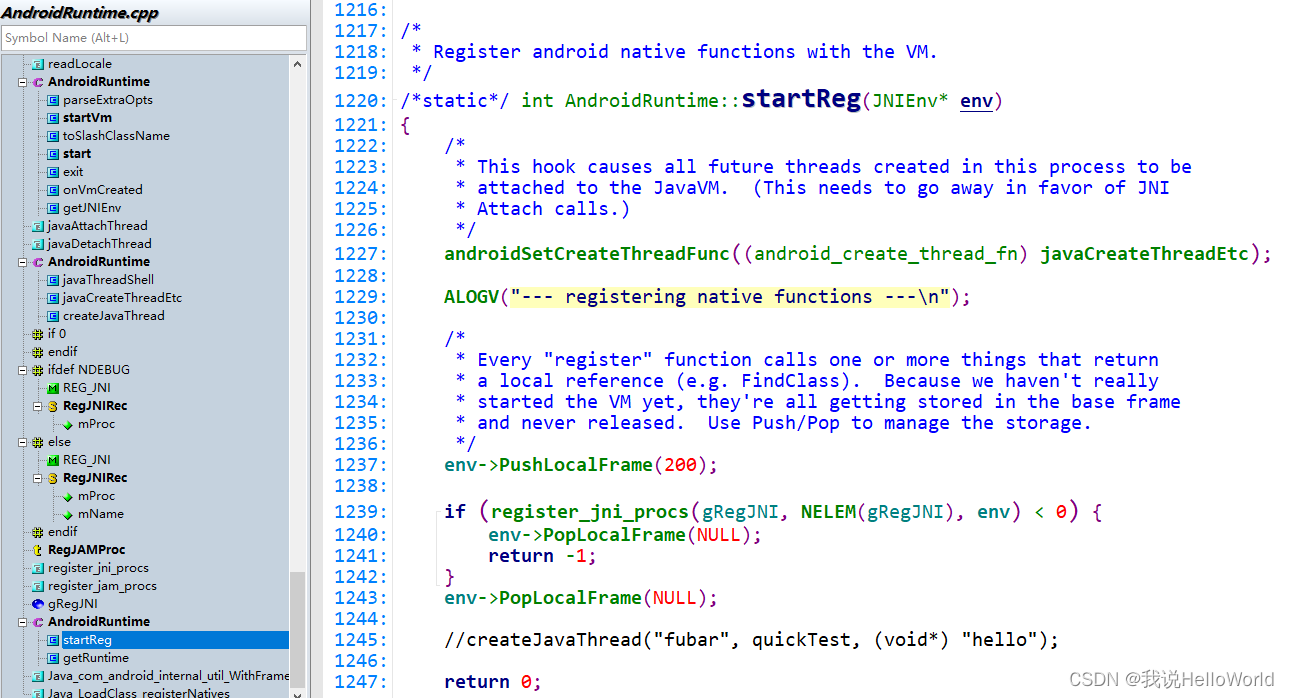
static int register_jni_procs(const RegJNIRec array[], size_t count, JNIEnv* env)
{
for (size_t i = 0; i < count; i++) {
if (array[i].mProc(env) < 0) {
#ifndef NDEBUG
ALOGD("----------!!! %s failed to load\n", array[i].mName);
#endif
return -1;
}
}
return 0;
}

注意传入进来的参数
static const RegJNIRec gRegJNI[] = {
REG_JNI(register_android_debug_JNITest),
REG_JNI(register_com_android_internal_os_RuntimeInit),
REG_JNI(register_android_os_SystemClock),
REG_JNI(register_android_util_EventLog),
REG_JNI(register_android_util_Log),
REG_JNI(register_android_util_FloatMath),
REG_JNI(register_android_text_format_Time),
REG_JNI(register_android_content_AssetManager),
REG_JNI(register_android_content_StringBlock),
REG_JNI(register_android_content_XmlBlock),
REG_JNI(register_android_emoji_EmojiFactory),
REG_JNI(register_android_text_AndroidCharacter),
REG_JNI(register_android_text_AndroidBidi),
REG_JNI(register_android_view_InputDevice),
REG_JNI(register_android_view_KeyCharacterMap),
REG_JNI(register_android_os_Process),
REG_JNI(register_android_os_SystemProperties),
REG_JNI(register_android_os_Binder),
REG_JNI(register_android_os_Parcel),
REG_JNI(register_android_view_DisplayEventReceiver),
REG_JNI(register_android_nio_utils),
REG_JNI(register_android_graphics_PixelFormat),
REG_JNI(register_android_graphics_Graphics),
REG_JNI(register_android_view_GLES20DisplayList),
REG_JNI(register_android_view_GLES20Canvas),
REG_JNI(register_android_view_HardwareRenderer),
REG_JNI(register_android_view_Surface),
REG_JNI(register_android_view_SurfaceSession),
REG_JNI(register_android_view_TextureView),
REG_JNI(register_com_google_android_gles_jni_EGLImpl),
REG_JNI(register_com_google_android_gles_jni_GLImpl),
REG_JNI(register_android_opengl_jni_EGL14),
REG_JNI(register_android_opengl_jni_GLES10),
REG_JNI(register_android_opengl_jni_GLES10Ext),
REG_JNI(register_android_opengl_jni_GLES11),
REG_JNI(register_android_opengl_jni_GLES11Ext),
REG_JNI(register_android_opengl_jni_GLES20),
REG_JNI(register_android_graphics_Bitmap),
REG_JNI(register_android_graphics_BitmapFactory),
REG_JNI(register_android_graphics_BitmapRegionDecoder),
REG_JNI(register_android_graphics_Camera),
REG_JNI(register_android_graphics_Canvas),
REG_JNI(register_android_graphics_ColorFilter),
REG_JNI(register_android_graphics_DrawFilter),
REG_JNI(register_android_graphics_Interpolator),
REG_JNI(register_android_graphics_LayerRasterizer),
REG_JNI(register_android_graphics_MaskFilter),
REG_JNI(register_android_graphics_Matrix),
REG_JNI(register_android_graphics_Movie),
REG_JNI(register_android_graphics_NinePatch),
REG_JNI(register_android_graphics_Paint),
REG_JNI(register_android_graphics_Path),
REG_JNI(register_android_graphics_PathMeasure),
REG_JNI(register_android_graphics_PathEffect),
REG_JNI(register_android_graphics_Picture),
REG_JNI(register_android_graphics_PorterDuff),
REG_JNI(register_android_graphics_Rasterizer),
REG_JNI(register_android_graphics_Region),
REG_JNI(register_android_graphics_Shader),
REG_JNI(register_android_graphics_SurfaceTexture),
REG_JNI(register_android_graphics_Typeface),
REG_JNI(register_android_graphics_Xfermode),
REG_JNI(register_android_graphics_YuvImage),
REG_JNI(register_android_database_CursorWindow),
REG_JNI(register_android_database_SQLiteConnection),
REG_JNI(register_android_database_SQLiteGlobal),
REG_JNI(register_android_database_SQLiteDebug),
REG_JNI(register_android_os_Debug),
REG_JNI(register_android_os_FileObserver),
REG_JNI(register_android_os_FileUtils),
REG_JNI(register_android_os_MessageQueue),
REG_JNI(register_android_os_ParcelFileDescriptor),
REG_JNI(register_android_os_SELinux),
REG_JNI(register_android_os_Trace),
REG_JNI(register_android_os_UEventObserver),
REG_JNI(register_android_net_LocalSocketImpl),
REG_JNI(register_android_net_NetworkUtils),
REG_JNI(register_android_net_TrafficStats),
REG_JNI(register_android_net_wifi_WifiManager),
REG_JNI(register_android_os_MemoryFile),
REG_JNI(register_com_android_internal_os_ZygoteInit),
REG_JNI(register_android_hardware_Camera),
REG_JNI(register_android_hardware_SensorManager),
REG_JNI(register_android_hardware_SerialPort),
REG_JNI(register_android_hardware_UsbDevice),
REG_JNI(register_android_hardware_UsbDeviceConnection),
REG_JNI(register_android_hardware_UsbRequest),
REG_JNI(register_android_media_AudioRecord),
REG_JNI(register_android_media_AudioSystem),
REG_JNI(register_android_media_AudioTrack),
REG_JNI(register_android_media_JetPlayer),
REG_JNI(register_android_media_RemoteDisplay),
REG_JNI(register_android_media_ToneGenerator),
REG_JNI(register_android_opengl_classes),
REG_JNI(register_android_server_NetworkManagementSocketTagger),
REG_JNI(register_android_server_Watchdog),
REG_JNI(register_android_ddm_DdmHandleNativeHeap),
REG_JNI(register_android_backup_BackupDataInput),
REG_JNI(register_android_backup_BackupDataOutput),
REG_JNI(register_android_backup_FileBackupHelperBase),
REG_JNI(register_android_backup_BackupHelperDispatcher),
REG_JNI(register_android_app_backup_FullBackup),
REG_JNI(register_android_app_ActivityThread),
REG_JNI(register_android_app_NativeActivity),
REG_JNI(register_android_view_InputChannel),
REG_JNI(register_android_view_InputEventReceiver),
REG_JNI(register_android_view_KeyEvent),
REG_JNI(register_android_view_MotionEvent),
REG_JNI(register_android_view_PointerIcon),
REG_JNI(register_android_view_VelocityTracker),
REG_JNI(register_android_content_res_ObbScanner),
REG_JNI(register_android_content_res_Configuration),
REG_JNI(register_android_animation_PropertyValuesHolder),
REG_JNI(register_com_android_internal_content_NativeLibraryHelper),
};
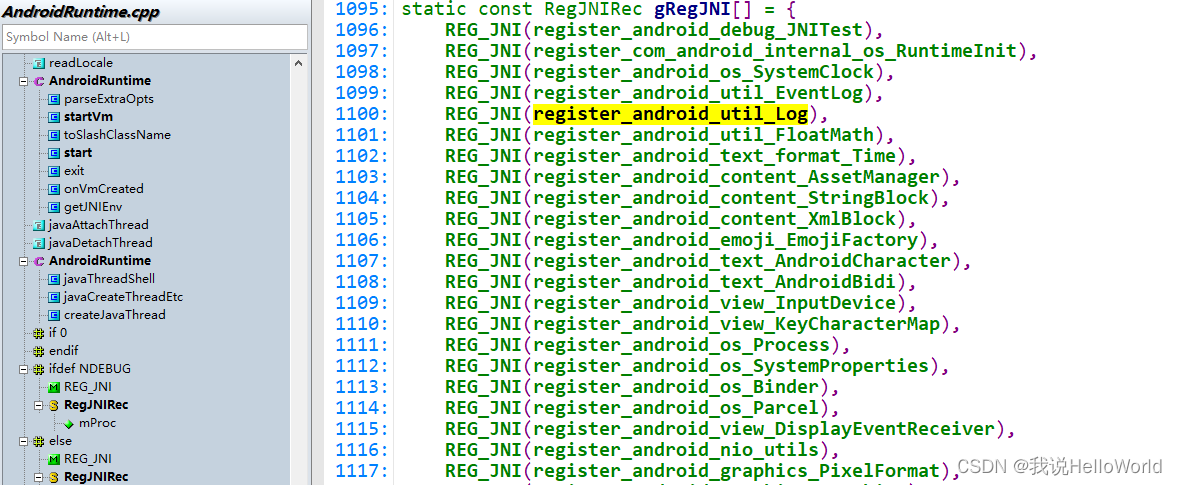
看到register_android_util_Log了吧
int register_android_util_Log(JNIEnv* env)
{
jclass clazz = env->FindClass("android/util/Log");
if (clazz == NULL) {
ALOGE("Can't find android/util/Log");
return -1;
}
levels.verbose = env->GetStaticIntField(clazz, env->GetStaticFieldID(clazz, "VERBOSE", "I"));
levels.debug = env->GetStaticIntField(clazz, env->GetStaticFieldID(clazz, "DEBUG", "I"));
levels.info = env->GetStaticIntField(clazz, env->GetStaticFieldID(clazz, "INFO", "I"));
levels.warn = env->GetStaticIntField(clazz, env->GetStaticFieldID(clazz, "WARN", "I"));
levels.error = env->GetStaticIntField(clazz, env->GetStaticFieldID(clazz, "ERROR", "I"));
levels.assert = env->GetStaticIntField(clazz, env->GetStaticFieldID(clazz, "ASSERT", "I"));
return AndroidRuntime::registerNativeMethods(env, "android/util/Log", gMethods, NELEM(gMethods));
}

动态注册完成,那共享库(.so)是在哪里加载的呢?
8、共享库加载
看本地实现文件的mk:frameworks\base\core\jni
LOCAL_SRC_FILES:= \
AndroidRuntime.cpp \
Time.cpp \
com_android_internal_content_NativeLibraryHelper.cpp \
com_google_android_gles_jni_EGLImpl.cpp \
com_google_android_gles_jni_GLImpl.cpp.arm \
android_app_NativeActivity.cpp \
android_opengl_EGL14.cpp \
android_opengl_GLES10.cpp \
android_opengl_GLES10Ext.cpp \
android_opengl_GLES11.cpp \
android_opengl_GLES11Ext.cpp \
android_opengl_GLES20.cpp \
android_database_CursorWindow.cpp \
android_database_SQLiteCommon.cpp \
android_database_SQLiteConnection.cpp \
android_database_SQLiteGlobal.cpp \
android_database_SQLiteDebug.cpp \
android_emoji_EmojiFactory.cpp \
android_view_DisplayEventReceiver.cpp \
android_view_Surface.cpp \
android_view_SurfaceSession.cpp \
android_view_TextureView.cpp \
android_view_InputChannel.cpp \
android_view_InputDevice.cpp \
android_view_InputEventReceiver.cpp \
android_view_KeyEvent.cpp \
android_view_KeyCharacterMap.cpp \
android_view_HardwareRenderer.cpp \
android_view_GLES20DisplayList.cpp \
android_view_GLES20Canvas.cpp \
android_view_MotionEvent.cpp \
android_view_PointerIcon.cpp \
android_view_VelocityTracker.cpp \
android_text_AndroidCharacter.cpp \
android_text_AndroidBidi.cpp \
android_os_Debug.cpp \
android_os_FileUtils.cpp \
android_os_MemoryFile.cpp \
android_os_MessageQueue.cpp \
android_os_ParcelFileDescriptor.cpp \
android_os_Parcel.cpp \
android_os_SELinux.cpp \
android_os_SystemClock.cpp \
android_os_SystemProperties.cpp \
android_os_Trace.cpp \
android_os_UEventObserver.cpp \
android_net_LocalSocketImpl.cpp \
android_net_NetUtils.cpp \
android_net_TrafficStats.cpp \
android_net_wifi_Wifi.cpp \
android_nio_utils.cpp \
android_text_format_Time.cpp \
android_util_AssetManager.cpp \
android_util_Binder.cpp \
android_util_EventLog.cpp \
android_util_Log.cpp \
android_util_FloatMath.cpp \
android_util_Process.cpp \
android_util_StringBlock.cpp \
android_util_XmlBlock.cpp \
android/graphics/AutoDecodeCancel.cpp \
android/graphics/Bitmap.cpp \
android/graphics/BitmapFactory.cpp \
android/graphics/Camera.cpp \
android/graphics/Canvas.cpp \
android/graphics/ColorFilter.cpp \
android/graphics/DrawFilter.cpp \
android/graphics/CreateJavaOutputStreamAdaptor.cpp \
android/graphics/Graphics.cpp \
android/graphics/HarfbuzzSkia.cpp \
android/graphics/Interpolator.cpp \
android/graphics/LayerRasterizer.cpp \
android/graphics/MaskFilter.cpp \
android/graphics/Matrix.cpp \
android/graphics/Movie.cpp \
android/graphics/NinePatch.cpp \
android/graphics/NinePatchImpl.cpp \
android/graphics/NinePatchPeeker.cpp \
android/graphics/Paint.cpp \
android/graphics/Path.cpp \
android/graphics/PathMeasure.cpp \
android/graphics/PathEffect.cpp \
android_graphics_PixelFormat.cpp \
android/graphics/Picture.cpp \
android/graphics/PorterDuff.cpp \
android/graphics/BitmapRegionDecoder.cpp \
android/graphics/Rasterizer.cpp \
android/graphics/Region.cpp \
android/graphics/Shader.cpp \
android/graphics/SurfaceTexture.cpp \
android/graphics/TextLayout.cpp \
android/graphics/TextLayoutCache.cpp \
android/graphics/Typeface.cpp \
android/graphics/Utils.cpp \
android/graphics/Xfermode.cpp \
android/graphics/YuvToJpegEncoder.cpp \
android_media_AudioRecord.cpp \
android_media_AudioSystem.cpp \
android_media_AudioTrack.cpp \
android_media_JetPlayer.cpp \
android_media_RemoteDisplay.cpp \
android_media_ToneGenerator.cpp \
android_hardware_Camera.cpp \
android_hardware_SensorManager.cpp \
android_hardware_SerialPort.cpp \
android_hardware_UsbDevice.cpp \
android_hardware_UsbDeviceConnection.cpp \
android_hardware_UsbRequest.cpp \
android_debug_JNITest.cpp \
android_util_FileObserver.cpp \
android/opengl/poly_clip.cpp.arm \
android/opengl/util.cpp.arm \
android_server_NetworkManagementSocketTagger.cpp \
android_server_Watchdog.cpp \
android_ddm_DdmHandleNativeHeap.cpp \
com_android_internal_os_ZygoteInit.cpp \
android_backup_BackupDataInput.cpp \
android_backup_BackupDataOutput.cpp \
android_backup_FileBackupHelperBase.cpp \
android_backup_BackupHelperDispatcher.cpp \
android_app_backup_FullBackup.cpp \
android_content_res_ObbScanner.cpp \
android_content_res_Configuration.cpp \
android_animation_PropertyValuesHolder.cpp
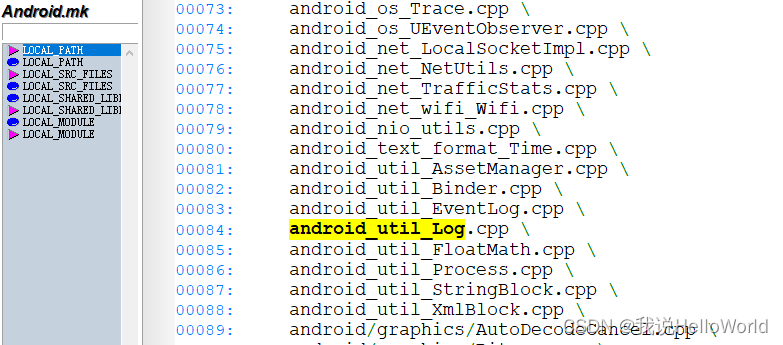
编译的共享库为:LOCAL_MODULE:= libandroid_runtime
ifeq ($(HAVE_SELINUX),true)
LOCAL_C_INCLUDES += external/libselinux/include
LOCAL_SHARED_LIBRARIES += libselinux
LOCAL_CFLAGS += -DHAVE_SELINUX
endif # HAVE_SELINUX
ifeq ($(USE_OPENGL_RENDERER),true)
LOCAL_SHARED_LIBRARIES += libhwui
endif
LOCAL_SHARED_LIBRARIES += \
libdl
# we need to access the private Bionic header
# <bionic_tls.h> in com_google_android_gles_jni_GLImpl.cpp
LOCAL_CFLAGS += -I$(LOCAL_PATH)/../../../../bionic/libc/private
LOCAL_LDLIBS += -lpthread -ldl
ifeq ($(WITH_MALLOC_LEAK_CHECK),true)
LOCAL_CFLAGS += -DMALLOC_LEAK_CHECK
endif
LOCAL_MODULE:= libandroid_runtime
include $(BUILD_SHARED_LIBRARY)
include $(call all-makefiles-under,$(LOCAL_PATH))
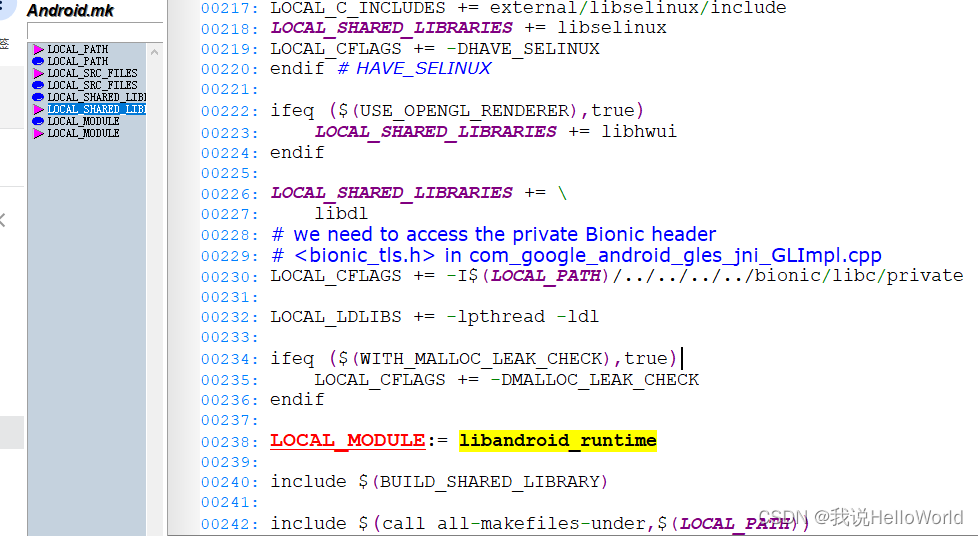
而共享库LOCAL_MODULE:= libandroid_runtime又被编译到另一个共享库:LOCAL_MODULE:= libandroid_servers
frameworks\base\services\jni:
LOCAL_PATH:= $(call my-dir)
include $(CLEAR_VARS)
LOCAL_SRC_FILES:= \
com_android_server_AlarmManagerService.cpp \
com_android_server_BatteryService.cpp \
com_android_server_input_InputApplicationHandle.cpp \
com_android_server_input_InputManagerService.cpp \
com_android_server_input_InputWindowHandle.cpp \
com_android_server_LightsService.cpp \
com_android_server_power_PowerManagerService.cpp \
com_android_server_SerialService.cpp \
com_android_server_SystemServer.cpp \
com_android_server_UsbDeviceManager.cpp \
com_android_server_UsbHostManager.cpp \
com_android_server_VibratorService.cpp \
com_android_server_location_GpsLocationProvider.cpp \
com_android_server_connectivity_Vpn.cpp \
onload.cpp
LOCAL_C_INCLUDES += \
$(JNI_H_INCLUDE) \
frameworks/base/services \
frameworks/base/core/jni \
external/skia/include/core \
libcore/include \
libcore/include/libsuspend \
$(call include-path-for, libhardware)/hardware \
$(call include-path-for, libhardware_legacy)/hardware_legacy \
LOCAL_SHARED_LIBRARIES := \
libandroid_runtime \
libandroidfw \
libcutils \
libhardware \
libhardware_legacy \
libnativehelper \
libsystem_server \
libutils \
libui \
libinput \
libskia \
libgui \
libusbhost \
libsuspend
ifeq ($(WITH_MALLOC_LEAK_CHECK),true)
LOCAL_CFLAGS += -DMALLOC_LEAK_CHECK
endif
LOCAL_MODULE:= libandroid_servers
include $(BUILD_SHARED_LIBRARY)
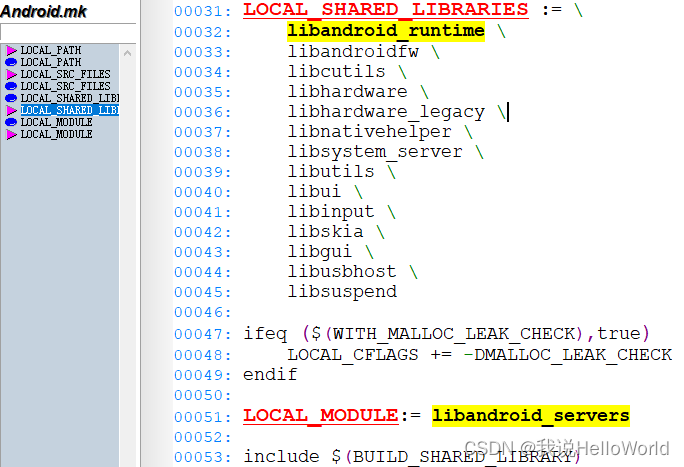
那就看共享库libandroid_servers是在那里加载的吧!
frameworks\base\services\java\com\android\server
public static void main(String[] args) {
if (System.currentTimeMillis() < EARLIEST_SUPPORTED_TIME) {
// If a device's clock is before 1970 (before 0), a lot of
// APIs crash dealing with negative numbers, notably
// java.io.File#setLastModified, so instead we fake it and
// hope that time from cell towers or NTP fixes it
// shortly.
Slog.w(TAG, "System clock is before 1970; setting to 1970.");
SystemClock.setCurrentTimeMillis(EARLIEST_SUPPORTED_TIME);
}
if (SamplingProfilerIntegration.isEnabled()) {
SamplingProfilerIntegration.start();
timer = new Timer();
timer.schedule(new TimerTask() {
@Override
public void run() {
SamplingProfilerIntegration.writeSnapshot("system_server", null);
}
}, SNAPSHOT_INTERVAL, SNAPSHOT_INTERVAL);
}
// Mmmmmm... more memory!
dalvik.system.VMRuntime.getRuntime().clearGrowthLimit();
// The system server has to run all of the time, so it needs to be
// as efficient as possible with its memory usage.
VMRuntime.getRuntime().setTargetHeapUtilization(0.8f);
System.loadLibrary("android_servers");
init1(args);
}
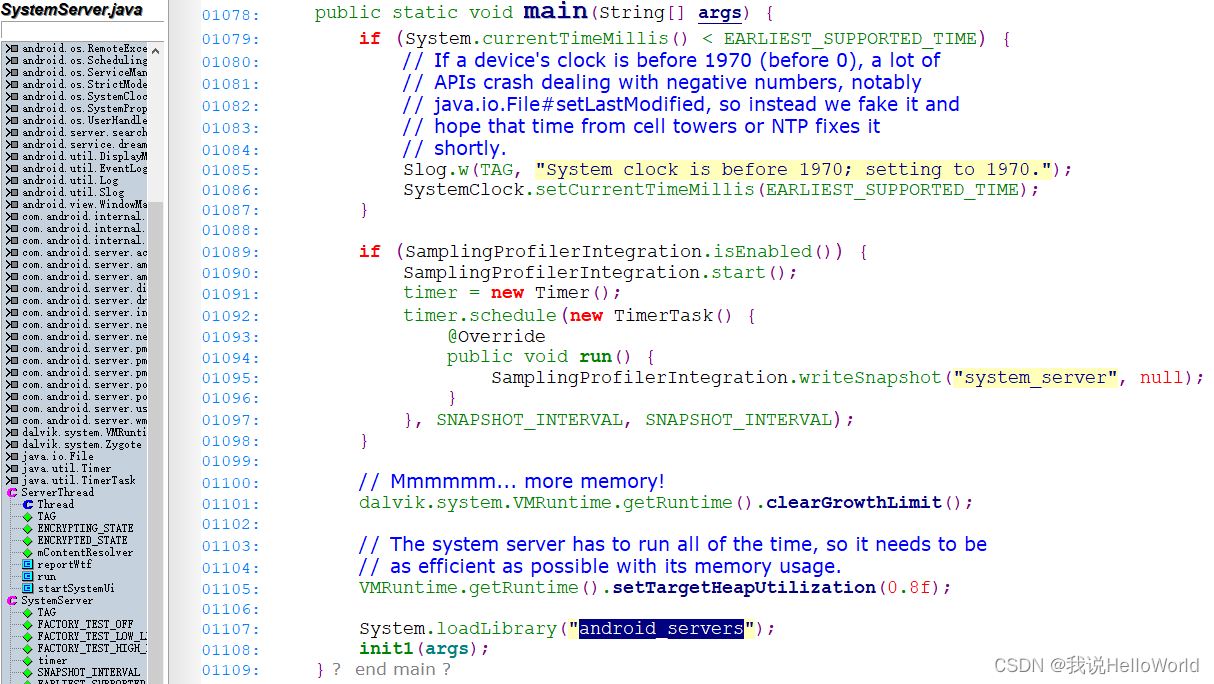
现在知道Log的JNI实现流程了吧?!!!
9、总结
JNI是Android开发中的一个重要工具,提供了Java代码与本地代码之间的桥梁。通过JNI,开发者可以在Java代码中调用高效的本地代码,访问特定硬件功能,以及重用现有的C/C++库。理解JNI的工作原理和使用方法,对于开发高性能、功能丰富的Android应用至关重要。
JNI(Java Native Interface)是Java平台的重要组成部分,允许Java代码与本地(通常是C/C++)代码进行互操作。在Android开发中,JNI广泛应用于性能优化、硬件访问以及重用现有的本地库。以下是关于JNI使用的总结,包括其优缺点、使用场景、开发步骤、注意事项以及最佳实践。
Android日志系统从应用程序层到JNI层、本地层、Logd守护进程,再到Logcat工具,形成了一个完整的日志记录与查看的流程。通过分析各个层级的代码实现,可以更深入地理解日志系统的设计和工作原理。这些组件紧密协作,提供了一个高效、可靠的日志记录和查看机制,帮助开发者调试和监控应用程序。
| 欢迎点赞|关注|收藏|评论,您的肯定是我创作的动力 |




